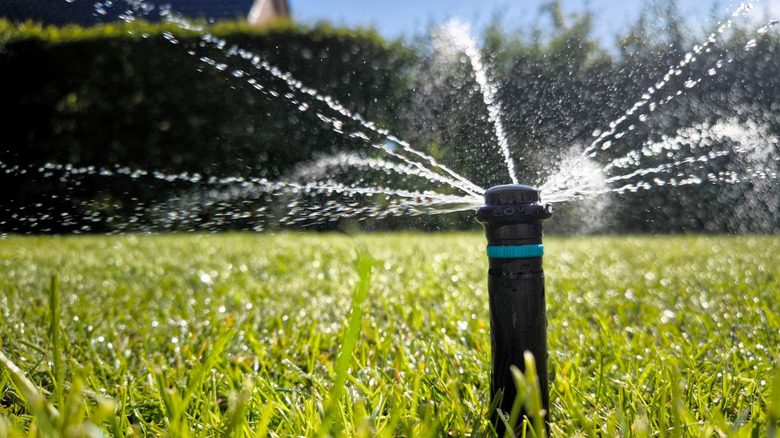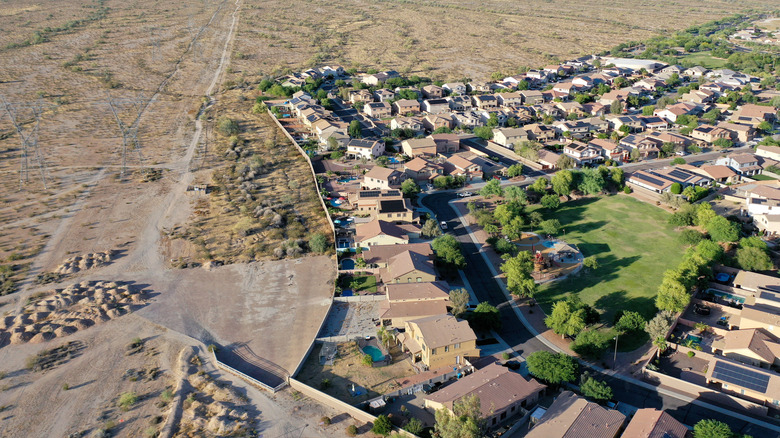Watering The Lawn Is Most Expensive For People Who Live In This Popular U.S. City
Velvety green grass that invites you to take your shoes off and bury your toes in the texture is a summertime delight. Yet, in arid places, having a lawn is a luxury that comes with a hefty price. Residents of Arizona are shelling out exorbitant amounts of money for the privilege of a plush lawn. Out of the top 10 U.S. cities where watering your lawn is the most expensive, eight of them are in Arizona. Coming in first is the town of Buckeye, Arizona, a suburban outpost that is among six metro Phoenix locales that made the top 10.
Buckeye residents shell out nearly 1% of their annual income on water. With a median annual household income just over $99k, that means many Buckeye residents spend nearly $1,000 per year on water. These eye-opening statistics may have residents scrambling to find lawn alternatives that can take the heat and planting drought-tolerant plants.
Many of the Arizona towns where water is most costly are also in the grips of extreme drought. But is it low supply of water alone that accounts for high prices? The truth is a little more nuanced than just supply and demand.
Factors affecting Buckeye water costs
The city of Buckeye does things a little differently than other places. The city's Water Resources Department is entirely funded by consumers rather than tax dollars. What's more, Buckeye's groundwater supply is difficult to access and needs expensive treatment before it can be used. These two factors contribute to high costs, and they're combined with the fact that the Department plans to raise rates this year for the first time since 2014. In June, the city announced the creation of the 2025 Citizen Water and Wastewater Rate Committee, which will make a recommendation on a new rate and rate structure in October.
Buckeye's population is continually growing, and this leads to increased water use. A resulting complaint is that the area doesn't have enough water for all residents. City officials say they don't want residents to feel deprived of "comfort and convenience" and instead suggest landscaping changes and the use of more efficient appliances as a way to curb water use.
Rather than imposing watering restrictions, the town is providing incentives for lowering water use. Some of Buckeye's policies include providing rebates for turf removal, irrigation system efficiency upgrades, and installing low-flow toilets. At the time of writing, the Buckeye city government hasn't yet acted on any of the steps in a Drought Management Plan that was created several years ago to impose water usage limitations on residents. If you live in an area where water comes at a premium, consider these drought-resistant lawn alternatives.

